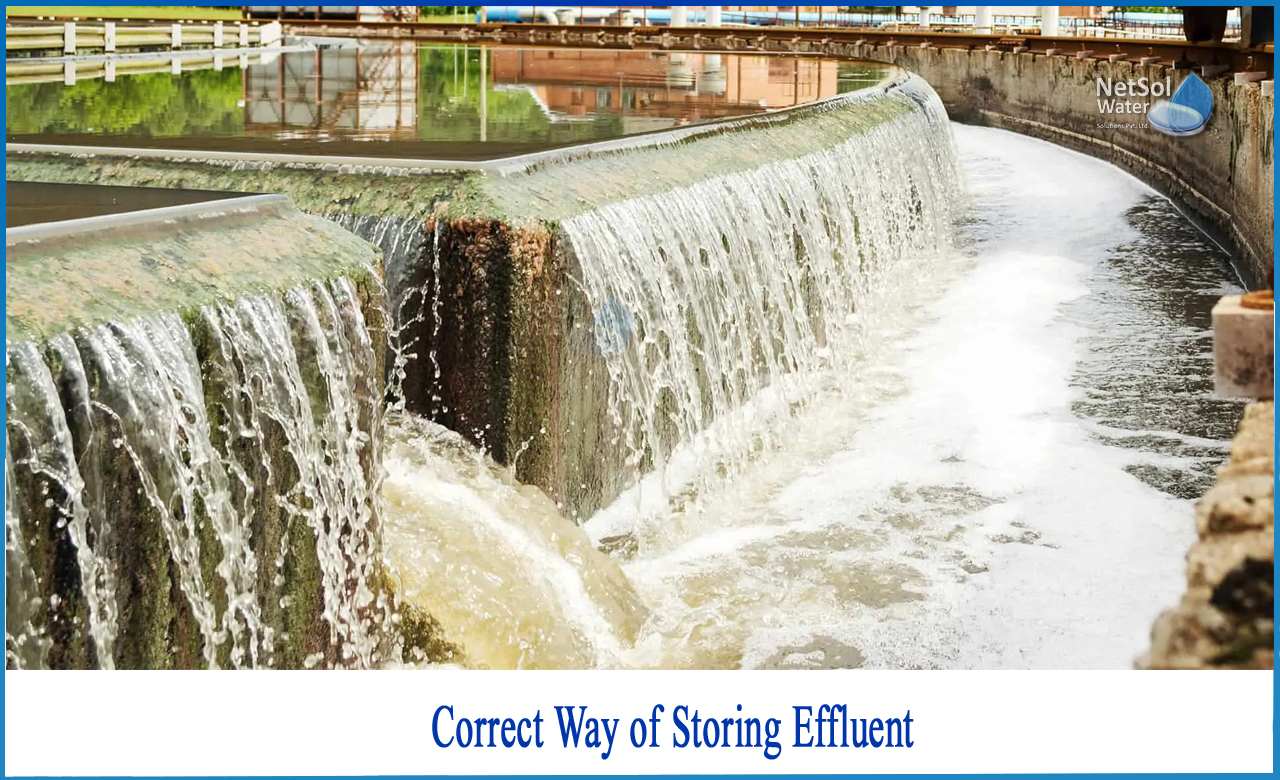What are the correct way of Storing Effluent?
Wastewater treatment plants are used for treatment of wastewater. It contains a large amount of organic matter. Direct discharge of wastewater into water bodies leads to DO depletion of water. Therefore, in order to meet the recommended wastewater quality standards, the wastewater must be treated before final disposal. The treatment plant ensures the removal of major pollutants from wastewater.
Process concept
Raw sewage contains large amounts of suspended solids and organic matter that depletes oxygen. Conceptual approaches to treatment include the removal of suspended solids, dissolved organic matter, and the treatment of sludge for disposal.
At the heart of this treatment scheme is an aerobic biological reactor designed on the basis of the activated sludge process. The activated sludge treatment process basically involves the stabilization of organic matter by the action of various microorganisms, as shown in the following formula.
ORGANIC MATTER + MICROORGANISMS + OXYGEN + NUTRIENTS = NEW CELLS + CARBON DIOXIDE + AMMONIA + ENERGY
In this biological process, some of the newly synthesized sludge undergoes an oxidation process called as endogenous respiration.
CELLS + OXYGEN →END PRODUCTS + LESS CELLS
The preformed biological flocs (MLSS) comes in contact with the input waste in the aeration tank under highly aerobic environment and oxidizes the organic matter to more stable materials. The efficiency of the system mainly depends upon the amount of active microorganism which performs the assimilation of organic matter.
Oxygen supply is required for:
· Oxidation of organic matter (substrate removal);
· Intrinsic respiration of microorganisms.
Nitrification usually begins after the carbon needs have been met. Excess or under nutrition (BOD supply) affects the physical quality of biological sludge. Activated sludge systems are designed for a specific ratio of food to microorganisms. This ratio is actually given by the amount of BOD in the feed per unit amount of suspended solids in the mixture per unit time. This can be expressed in kg, BOD/kg, MLSS/day.
Volatile suspended solids with inhibition of 60-70% of MLSS are used as measurements of active cells in the system. The optimum pH for an active biological aeration system is 6.5-9.0.
The required MLSS concentration is maintained in the aeration tank by recycling the biological solids separated by the secondary purification equipment. Excess biological sludge (and sludge from secondary purification equipment) needs to be further dehydrated. This is done on a sludge dry floor. The final drainage is suitable for drainage to inland surface water.
Proper storage for Effluent
The proper disposal of TP effluent or reuse requirements is an essential and important part of planning and designing WWT facilities. Different methods of ultimate disposal of secondary effluents are discussed as follows.
1: Natural Evaporation
The process involves large impoundments with no discharge. If precipitation exceeds evaporation, large impoundments may be necessary.This method is especially advantageous when residue needs to be recovered, such as in brine treatment.
2: Groundwater recharge
Groundwater recharge methods include rapid infiltration through sewage treatment or reservoirs, intermittent infiltration, and direct injection. In either case, there is a risk of groundwater pollution. In addition, direct injection means that the cost of wastewater treatment and injection equipment is high.
3: Irrigation
Irrigation is mainly carried out as a substitute for rare mineral water or light rainfall in dry areas. In most cases, plants in the food chain (that is, plants eaten by humans and animals, whose products are eaten by humans) should not be irrigated with wastewater. However, crops such as cotton, sugar cane, and seed crops are cultivated using wastewater. Treated effluent is used to irrigate parks, golf courses and highway strips.
4: Recreation Lake
Wastewater from the secondary treatment facility is stored in the lagoon for about 30 days. The sewage from the lagoon is chlorinated and then infiltrates into the sand and gravel areas, where it flows about 0.5 km and is collected in the catchment area. It is transported to a series of lakes used for swimming, boating and fishing.
5: Aquaculture
Aquaculture, or the production of aquatic organisms (both animals and plants), has been practiced for centuries primarily for the production of food, fibre and fertilizer. Lagoons are used for aquaculture, but artificial and natural wetlands are also being considered. However, the uncontrolled spread of water hyacinth is a major problem in itself, as flora can clog waterways and destroy water bodies.
6: Municipal Uses
Technology is now available to treat wastewater until it meets drinking water quality standards. However, direct reuse of treated wastewater is only practical in an emergency. Many natural bodies of water used for municipal water supply are also used for sanitation to supplement natural water resources by reusing wastewater many times before finally entering the sea.
7: Industrial uses
Key factors in the industrial reuse of wastewater are:
(1) The availability of natural water,
(2) The quality and quantity of wastewater and the cost of treatment,
(3) The cost of pumping and transporting wastewater, and
(4) Industrial process water that does not include public health considerations.
8: Discharge to mineral water
Discharge to mineral water is the most common disposal method. The self-purification or assimilative capacity of natural waters is thus utilized to provide the remaining treatment.
Conclusion
Effluent from WWTPs and WTPs must be stabilised and then sent to public systems which requires any one or combination of above mentioned methods. We at Netsol have the experience in this sector and can design, construct and operate your WWTP and its associated processes.
Netsol Water is Greater Noida-based leading water & wastewater treatment plant manufacturer. We are industry's most demanding company based on client review and work quality. We are known as best commercial RO plant manufacturers, industrial RO plant manufacturer, sewage treatment plant manufacturer, Water Softener Plant Manufacturers and effluent treatment plant manufacturers. Apart from this 24x7 customer support is our USP. Call on +91-9650608473, or write us at enquiry@netsolwater.com for any support, inquiry or product-purchase related query.



